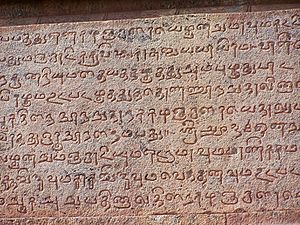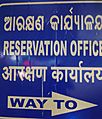Official language facts for kids
An official language is a special language that a country or government chooses to use for official business. This means it's the language used for laws, government documents, and public services. Sometimes, these languages are chosen by written rules, and sometimes they become official because they have been used for a very long time.
Many countries around the world have official languages. About 178 countries have at least one official language, and more than 100 of them have more than one! For example, Italy made Italian its official language in 1999. But some countries, like the United States, Mexico, and Australia, don't have an official language for the whole country.
Often, a country's constitution (its main set of laws) will mention its official languages. Having an official language can help different groups of people use their native languages when dealing with the government. Even if a country doesn't officially name a language, one language usually becomes the main one used by everyone.
English is the most common official language. It's recognized in 51 countries! Other languages like Arabic, French, and Spanish are also official in many places.
When an official language is also a language that started in that country, it's called endoglossic. If it's a language from another place, it's called exoglossic. For example, Nigeria has three official languages that are native to the country. This helps protect those local languages, even though English is also used as a common language for everyone.
Contents
History of Official Languages
Ancient Times
Long ago, around 500 BC, a powerful ruler named Darius the Great took control of a large area called Mesopotamia. He chose a language called Aramaic to be the official language for writing across his huge empire. This empire had many different people and languages. Aramaic writing was used from Egypt all the way to Bactria and Sogdiana in the northeast. People would speak in their own languages, but the messages were written down in Aramaic. Then, when the messages arrived, they were read out loud in the local language.
Later, in 221 BC, Qin Shi Huang became the first emperor of China. He made the written language of China the same everywhere. This standard written language, called Literary Chinese, was used for the next 2000 years! However, the spoken language wasn't standardized as much. Mandarin slowly grew from different local ways of speaking in the capital cities. It only became officially standardized in the early 1900s.
Official Language Facts
Many languages are official in three or more countries. Sometimes, a language might be called different names in different countries, even if they are very similar. For example, Hindi and Urdu are very alike, but they are considered separate languages in some places.
Here are some languages and how many countries use them officially:
- English: Official in 58 countries and 31 other areas.
- French: Official in 28 countries and 11 other areas.
- Arabic: Official in 23 countries, Palestine, and 2 other areas.
- Spanish: Official in 20 countries and 1 other area.
- Portuguese: Official in 9 countries and 1 other area.
- German: Official in 6 countries.
- Russian: Official in 5 countries and 4 other areas.
- Serbo-Croatian: Official in 4 countries and 1 other area.
- Malay: Official in 4 countries and 1 other area.
- Swahili: Official in 4 countries (or 5 if you count Comorian).
- Italian: Official in 3 countries and Vatican City.
- Persian: Official in 3 countries and 1 other area.
- Dutch: Official in 3 countries (or 4 if you count Afrikaans).
- Somali: Official in 3 countries and 1 other area.
- Sotho: Official in 3 countries.
- Standard Chinese (Mandarin): Official in 2 countries and Taiwan.
- Tamil: Official in 2 countries.
- Hindustani: Official in 3 countries (counting Fijian Hindi).
Some countries, like Australia, the United Kingdom, and the United States, don't have a national official language. On the other hand, Bolivia has the most official languages in the world, with 37! India is second with 22 official languages. South Africa has 12 official languages, all with equal importance.
Choosing Official Languages
Many Languages at Once
Deciding on an official language can sometimes cause disagreements. One way to avoid this is to have "official multilingualism". This means a government recognizes many official languages. When this happens, all government services are available in all those languages. People can choose which language they want to use when they deal with the government.
Many countries have more than one language spoken by their people, and many of them are officially multilingual. Taiwan, Canada, the Philippines, Belgium, Switzerland, and the European Union are good examples of places with multiple official languages. This approach can be seen as a way to recognize different groups of people within a country. It can also be an advantage for a country when it deals with other nations.
Related pages
Images for kids
See also
 In Spanish: Idioma oficial para niños
In Spanish: Idioma oficial para niños
- Language policy
- List of official languages by country and territory
- Minority language
- Regional language




